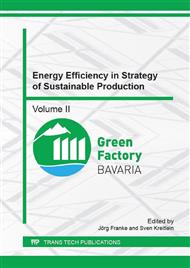p.188
p.195
p.201
p.209
p.217
p.224
p.231
p.238
p.244
The Impact of Pressure Regulators on the Runtime and Energy Savings of Supersonic Blowdown Wind Tunnels
Abstract:
Pressure regulators have a great impact on the runtime and energy savings of supersonic wind tunnels. In order to investigate this impact quantitatively the theoretical isentropic (ideal) equations for the supersonic wind tunnel flow were compared with viscous CFD computations. The theoretical model was extended include the flow from the outflow from the pressure vessel up to the wind tunnel. This theoretical model was solved with and without pressure regulation valve using a Runge-Kutta method. The differences in runtime and energy consumption for both configurations with and without pressure regulator as well as the derivation of the analytical model and the numerical solution are presented in detail in this paper.
Info:
Periodical:
Pages:
238-243
Citation:
Online since:
November 2016
Authors:
Keywords:
Price:
Сopyright:
© 2017 Trans Tech Publications Ltd. All Rights Reserved
Share:
Citation:


